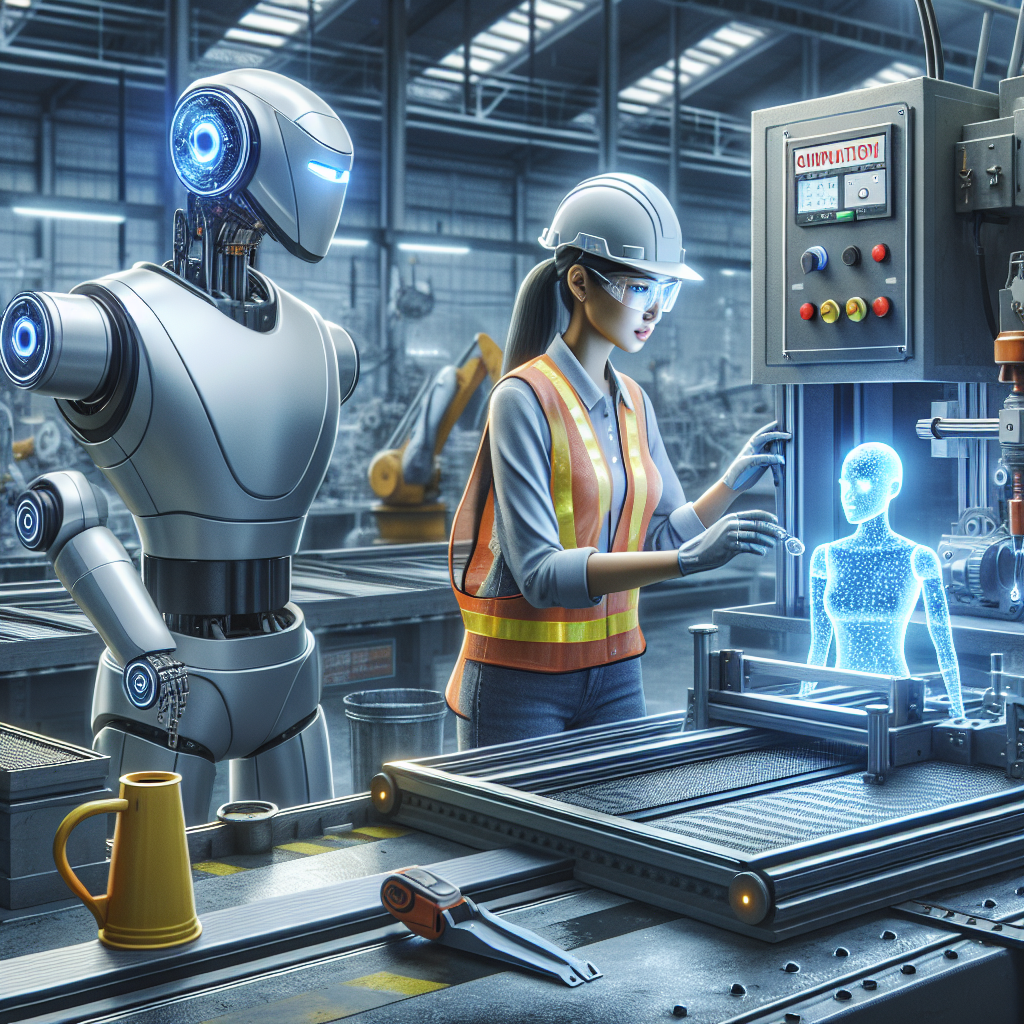In recent years, artificial intelligence (AI) has been making significant strides in improving worker safety in the manufacturing industry. By utilizing AI technology, manufacturers are able to identify potential hazards, predict risk factors, and implement preventative measures to keep their employees safe on the job. This innovative approach to workplace safety has the potential to revolutionize the manufacturing industry and reduce the number of workplace accidents and injuries.
One of the key benefits of using AI in manufacturing is the ability to analyze vast amounts of data in real-time to identify potential safety hazards. AI algorithms can be trained to recognize patterns and trends in data that may indicate a potential risk to workers. For example, AI can analyze data from sensors on machinery to detect abnormalities that may indicate a potential breakdown or malfunction. By identifying these issues early on, manufacturers can take proactive steps to address them before they pose a threat to workers.
Another way that AI is enhancing worker safety in manufacturing is through predictive analytics. By analyzing historical data, AI can predict when and where accidents are most likely to occur, allowing manufacturers to take preventative action to reduce the risk of injury. For example, AI can analyze data on past workplace accidents to identify common risk factors and develop strategies to mitigate those risks in the future. This predictive approach to safety allows manufacturers to be proactive in addressing potential hazards before they result in harm to workers.
AI technology is also being used to improve worker training and education in the manufacturing industry. By utilizing virtual reality (VR) and augmented reality (AR) technology, manufacturers can create immersive training programs that simulate real-world workplace scenarios. This allows workers to practice safety procedures in a controlled environment and learn how to respond to potential hazards before they encounter them on the job. By providing workers with hands-on training in a safe and controlled setting, manufacturers can ensure that their employees are well-prepared to handle any safety challenges they may face in the workplace.
In addition to predictive analytics and training programs, AI is also being used to enhance safety protocols in manufacturing facilities. For example, AI-powered robots can be used to perform dangerous or repetitive tasks, reducing the risk of injury to human workers. These robots can also be equipped with sensors and cameras to detect potential hazards in the workplace and alert human workers to take corrective action. By automating these tasks, manufacturers can reduce the risk of accidents and injuries while improving overall efficiency in the production process.
Overall, the use of AI in manufacturing is revolutionizing the way that workplace safety is managed. By leveraging AI technology to analyze data, predict risks, and enhance training programs, manufacturers are able to create safer working environments for their employees. As AI continues to advance, we can expect to see even greater improvements in worker safety in the manufacturing industry.
FAQs:
Q: How does AI improve worker safety in manufacturing?
A: AI technology allows manufacturers to analyze vast amounts of data in real-time to identify potential safety hazards, predict risk factors, and implement preventative measures to keep their employees safe on the job.
Q: What are some examples of how AI is used to enhance worker safety in manufacturing?
A: AI is used to analyze data from sensors on machinery to detect abnormalities, predict when and where accidents are most likely to occur, improve worker training programs, and automate dangerous or repetitive tasks.
Q: How can manufacturers benefit from using AI to improve worker safety?
A: By leveraging AI technology, manufacturers can reduce the number of workplace accidents and injuries, improve overall efficiency in the production process, and create safer working environments for their employees.
Q: What are some future trends in AI technology that may further enhance worker safety in manufacturing?
A: Future trends in AI technology may include the use of advanced robotics, augmented reality (AR), and predictive analytics to further improve worker safety in the manufacturing industry.

